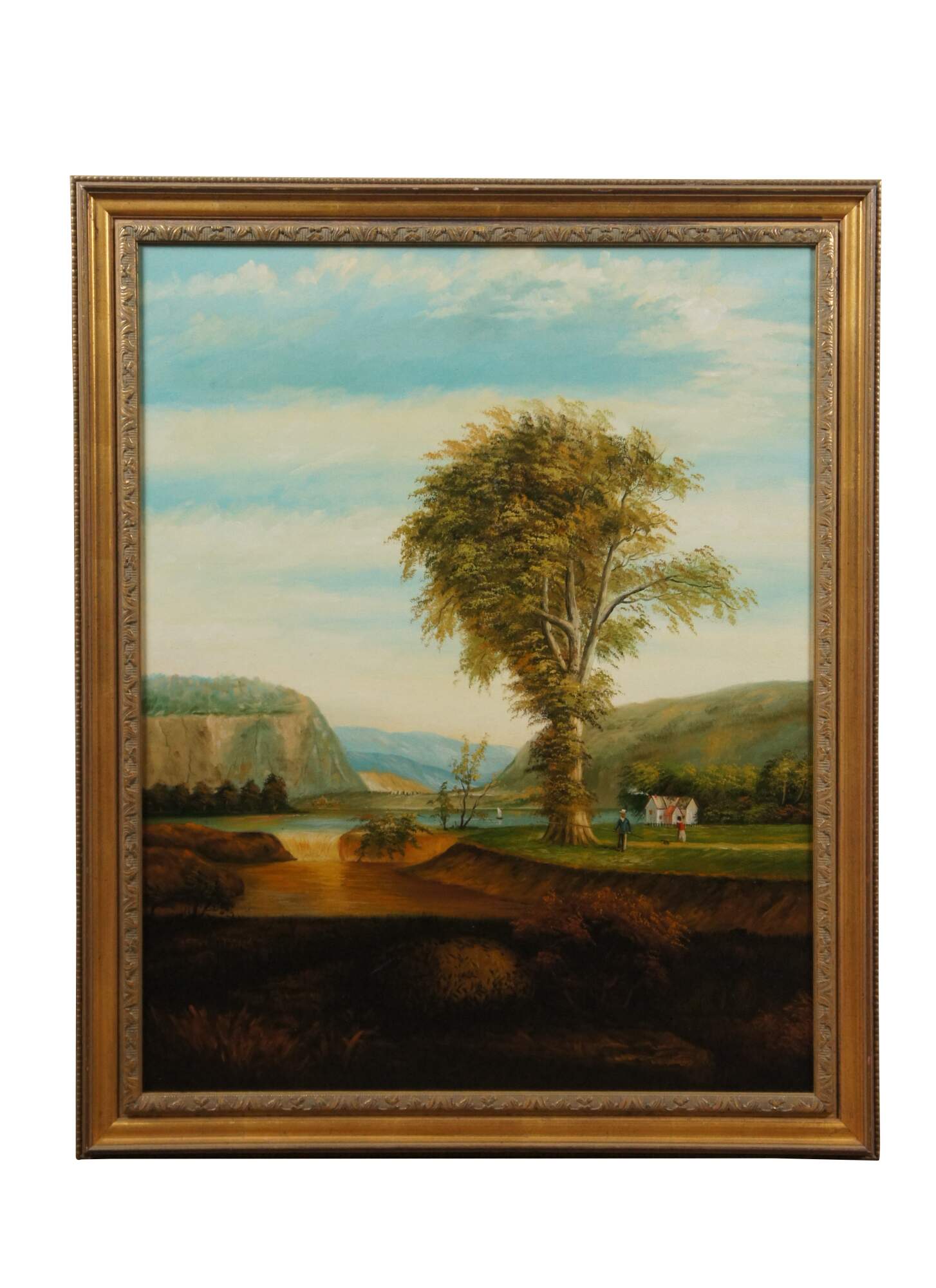
Shipping:
Free Shipping Included
Delivery:
Estimated 2-15 Business Days
Payments:
Credit Card, Check, Cash, PayPal, Apple Pay, Venmo
Returns:
30 Days 100% Money Back Guarantee, Buyer Pays Return Shipping
Description
Vintage Chelsea House #4569 – Scene in the Catskills – Reproduced in oil on canvas from the original by Thomas Doughty (1793- 1856). In this Scene in the Catskills, Doughty has infused in the painting all that is quiet and lovely, romantic and beautiful in nature. Doughty was one of the foremost artist of the Hudson River School. The original is in the Boscolbel Collection.
Thomas Doughty was an important precursor of the Hudson River School, acclaimed as America’s dominant landscape tradition of the nineteenth century. Like his contemporaries, Doughty composed landscapes in his studio from various sketches made in nature. The major influences on his work were seventeenth-century European artists and the English Romantic painters. In 1833, a critic writing in the Knickerbocker, an important literary magazine of the day, commented that Doughty’s paintings capture “all that is quiet and lovely, romantic and beautiful in nature.” [1]
Painted three years later, In the Catskills is in keeping with this early assessment of Doughty’s work. The painting employs picturesque conventions to encourage the viewer’s contemplation of nature: diffused light creates an atmospheric quality that bathes soft rolling hills in the middle ground, while dark forms of rocks and trees in the foreground frame the peaceful vista. A distant mountain peak prevents a sweeping view and serves to enclose the scene. A hunter with his dog stands pondering the scene and his position creates a strong diagonal to the cascade in the middle distance. Each of these elements is articulated with a restrained palette and tight brushwork.
While Doughty made several trips from his home in Boston to the Catskill region between 1836 and 1837, no sketch exists representing this particular view. It is probably an artistic invention, not an uncommon approach for Doughty and his peers. It also has an emblematic quality. The hunter faces toward a mountain range aglow with light from a setting sun, a device that suggests an awareness of western expansion and an appreciation for the abundance the country has to offer. [2]
Doughty succeeds in imparting the sense of awe that is central to Romantic principles. The connection between God and nature was a seminal topic for period writers who helped to popularize landscape painting. Ralph Waldo Emerson’s essay Nature, published the same year that this canvas was painted, encapsulates these ideals: “I become a transparent eyeball; I am nothing; I see all; the currents of the Universal Being circulate through me; I am part or parcel of God.” [3] A similar spiritual encounter between an individual and the landscape is at the heart of In the Catskills.
Alt:
“Born in Philadelphia, Thomas Doughty was the first American artist to work exclusively as a landscapist and was successful both for his skill and the fact that Americans were turning their interest to landscape. He was known for his quiet, often atmospheric landscapes of the rivers and mountains of Pennsylvania, New York, especially the Hudson River Valley, and New England.
A criticism of his work was that "there was often more of Doughty in his landscapes than there was of the location he painted." His landscapes were popular early in his career, but he was surpassed by Thomas Cole and other Hudson River painters in the view of a public that wearied of his work that was perceived as "over-mannered and too unspecific compared to that of his successors." (Zellman 112)
Doughty was trained in leather manufacturing but turned to art as leisure activity and received only three months of training in India-ink drawing. In 1820, he turned to art completely, and by 1822, was exhibiting at the Pennsylvania Academy of Fine Arts and two years later was elected an academician. In 1827, he was elected an honorary member of the National Academy of Design.
He was also a creative lithographer, and from 1830 to 1834, published with his brother a monthly journal called Cabinet of Natural History and American Rural Sports. In this publication, birds and animals were drawn precisely with landscape backgrounds by Doughty.
Doughty spent much of his life in Baltimore, Washington, Boston, and New York City, but for much of the time made his home in Philadelphia until 1832 when he moved to Boston. After five years in Boston, he went to England for two years. On his return to America in 1838, Doughty lived for a time in New York City, but in 1839-40 he was at Newburgh, New York on the Hudson River.
He returned in 1841 to New York City, where he remained, except for a second trip to Europe (1845-46) and a brief residence in western New York (1852-54), until his death, whose date is uncertain. Some give his death date as 1856, but census records indicate he was still alive in 1860. He spent the last 20 years of his career in New York City.”
Condition
Very Good
Dimensions
28" x 1.25" x 34" / Sans Frame - 23.25" x 29.5" (Width x Depth x Height)